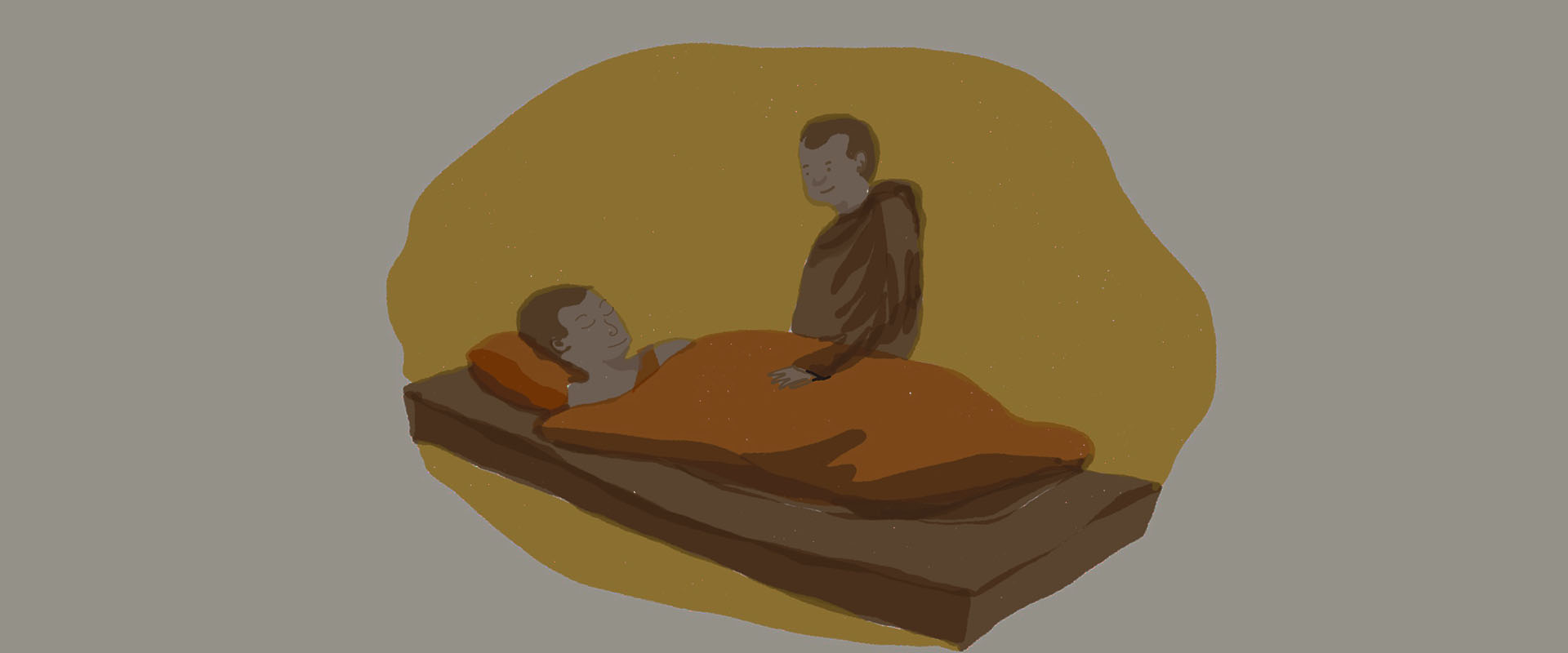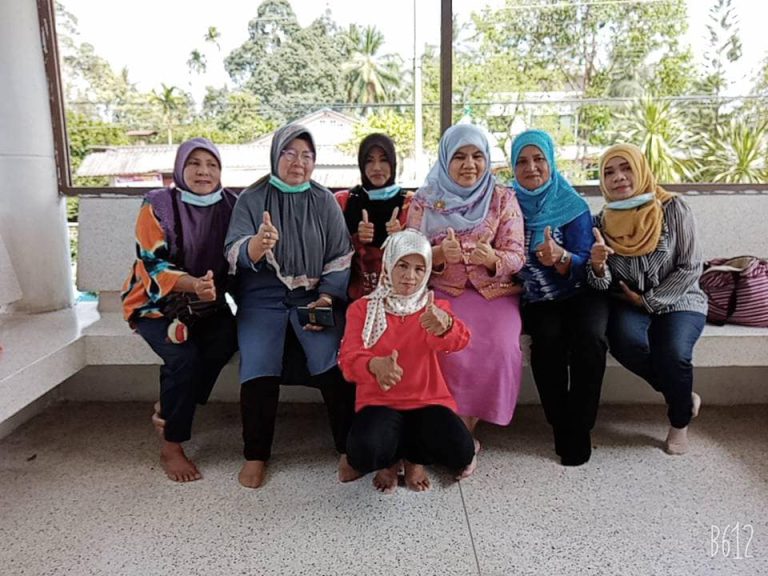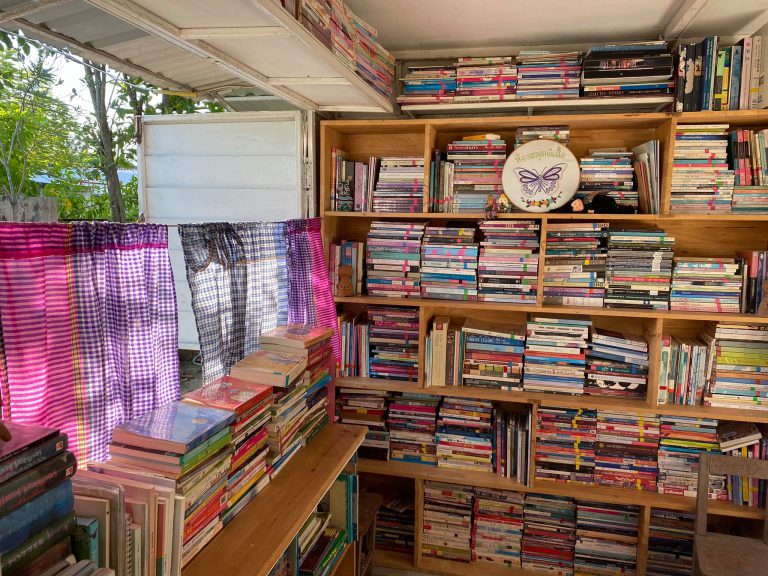Story: Pongkamon Surat
At the mention of the role of monks in end-of-life care, we may think of prayers and recitations of the dhamma for patients, providing consolation and encouragement for patients and their families, organizing merit-making rituals and making merit for the deceased. These are the kind of images that come to mind for most people when they think of monks and end-of-life care. Monks are often in the position of providing emotional and spiritual support; they are representatives of the laypeople’s religious beliefs and faith in aspects of health and spirituality.
On the other hand, when monks approach the end of their lives, in what ways will systems of care and support for them differ from those for the laypeople? Who will take care of them and what should be done to ensure that they can live the rest of their lives in peace without contradicting their religious practices? What should be done in the event that a monk nearing the end of their life wishes to return to their temple or home, and what if the temple or family are unable to care for them? Most importantly, how ready is Thai society to take care of sick monks? These are concerns that most people may not have thought about before.
Phra Vichit Thammachito, whose past experience studying public health before he ordained as a monk and directly encountered the issues mentioned above, gives him insight into the significant absence of end-of-life care for monks. This was the impetus that led him to build a hospice for monks in collaboration with partnering networks, in order to create a space that is particularly suited for caring for end-stage and chronically ill monks. At the moment, the project is at the stage of coordinating and building the systems needed to realize the space.
What are hospices for monks?
A hospice is a special facility designated for end-of-life care, and where patients live before they pass away (generally, for the last six months of their lives or less). Hospices attend to the quality of life of patients and their families, and focus on alleviating patients’ pain and discomfort and caring for their physical, emotional, social and spiritual well-being.
Terminally-ill monks are first and foremost patients, but they are patients that are still ordained and therefore require specialised care and practices that are different from laypeople’s. The hospice for monks is designed for the treatment of terminally-ill and chronically-ill monks, and monks with incurable diseases, who are in need of a palliative care system that accounts for their specialised needs.“The hospice for monks is an initiative for supporting terminally-ill monks who refuse medical treatment but whose family or temple are unable to look after them. There should be a place that is like a temple, that fully supports their spiritual development, with a care system that observes traditions of monkhood and penance as closely as possible. Novice monks and temple-goers can be caregivers, so that they also learn the buddhist way. The monks will feel their devotion to buddhism and good deeds have returned to them in their last stage of life, and pass away feeling prepared,” says Phra Vichit.

Why do we need hospices for monks?
In Thailand, most terminally-ill monks will spend the last stage of their life in a hospital because they do not have people to care for them at home or the temple, though hospitals may not have enough beds for all their patients. Furthermore, monks also have a different way of life from laypeople that requires the observation of specific practices. These realities have led Phra Vichit to conclude that special hospices for monks would be a good option for caring for sick monks in particular.
The problem is, to put it bluntly, that monks aren’t having the good deaths that they should be. There are a good number of monks who are abandoned at hospitals. Some of them are well enough to be discharged, but no one from home or from the temple comes to pick them up, which means that some of them end up remaining at the hospital for up to three years. This signals a real crisis. Or sometimes, local hospitals will contact the temple when a sick monk can return and continue to be cared for there but the temple will say that they don’t have anyone to care for the sick monk, that they can’t care for him.
“Medical treatment for end-of-life patients is becoming increasingly complex. If the temple isn’t prepared to handle it, sick monks will have to go home. The monks themselves don’t want to go, of course. At home, it is hard to maintain one’s monkhood, because the main caregivers are women. When they reach out to the provincial social welfare center, the center will say that they don’t take in monks, and if a monk really wants to be brought in, then he must leave the monkhood first. The monk does not want to leave the monkhood because he wants to serve his religion. And so, the monk is beset by troubles,” says Phra Vichit, as he explains the dilemma faced by many of his acquaintances in the monkhood.
Additionally, even though hospitals are staffed with doctors and nurses and equipped with modern medical technology, an environment crowded with medical equipment and personnel walking to and fro isn’t particularly well-suited for the maintenance of spiritual discipline and practice. “When monks who practice meditation are admitted to the hospital, they are in surroundings that are not suitable for the observation of the buddhist precepts as well as their own self-healing. It is not appropriate for meditation and spiritual practice. A certain number of monks, especially those with a strict practice, will for the most part refuse treatment. If they are able to, they will return to live at their temple as before.”
Knowledge and Organisational Infrastructure are Important
The most important components of building a hospice for monks is an understanding of how to care for terminally-ill monks and establishing the necessary healthcare infrastructure. Phra Vichit says that, “The most important things are infrastructure and knowledge — techniques for taking care of monks in the last stage of their lives. What can we do to help them pass on in the best manner possible? This is most important. As for the other aspects, those include a space where it is easy to provide healthcare that is sanitary, economical and in harmony with its surroundings”.
On top of this, each monk will have different needs that need to be met. Therefore, their healthcare system must be flexible and able to take into consideration the social and cultural dimensions of their lives. This is reflected in a chapter from Phra Vichit’s book “Hospital Care for Monks”, which he wrote with the intention of distributing knowledge about how to care for sick monks. He wants the general public to understand that “if a monk has devoted a considerable amount of time to the study of buddhist practice, he will usually have let go of the suffering that he encounters in the world and his family to a great extent. He will have accepted that sickness and death are always imminent. However, he may still be burdened by other suffering, and if possible, we should help alleviate them. He may have concerns about unfinished work at the temple, the cost of medical treatment, notifying family of his condition and the care of his pets at the temple. On the other hand, monks who aren’t as interested in the study of buddhist practice are often afflicted with greater suffering and struggle to let go. In their case, we may draw from techniques used with end-of-life patients in general and modify them for these monks accordingly.”
This resonates with a general dilemma in the provision of care for hospitalized, terminally-ill monks, which is the neglect of the spiritual dimension of their well-being. Hospital staff often overlook the importance of spirituality, are uninformed in these matters, or assume that monks are spiritually secure and are already reconciled to death. According to the results of a study titled “Providing Care for Terminally-Ill Monks” (Rewat Ekawuthiwongsa, Phassakorn Ngaongarm, Priyya Wuthisarn, Wararat Suntrapham, 2015) into care received by terminally-ill monks at a healthcare unit for monks in particular hospital, hospital staff assumed that monks, through their wisdom and religious practice, should be able to accept death and therefore thought that they did not have to take care of these spiritual concerns.

How can we help make the hospice for monks a reality?
As of the time of writing, the hospice for monks is in the early stages of development — coordinating project members, planning the space, drawing up a budget, liaising support from other organisations, consulting with monks experienced in end-of-life care and palliative care workers. The structure of the project is starting to take shape, but a central issue that will require further consideration is the question of how to interest monks in learning about ways they can take care of sick members of their order and how buddhist principles can be practiced through the healing of sick monks in a clear and concrete form, rather than as abstract concept.
This is the first stage. From my conversations with the other parties involved, they are all in support of the project. People have offered to donate land to us, our fundraising efforts are transparent and can be accounted for from the very beginning, and the organisation of the project is going smoothly. However, a concern we still have is with the volunteer monks who will take care of our patients. How do we interest them in taking care of other sick monks while still engaged in their religious practice and education? In medical practice, drugs may be used to relieve pain but in buddhist philosophy, we use the dharmma in taking care of the patient to see how they can be with that pain or their body in a concrete way. If we can do this, we will have been able to create a buddhist approach to palliative care, which will be useful to society and add to the value of buddhism.
What Phra Vichit would like to request from those who are interested, whether monks or laypeople, is to support and disseminate this model into other spaces. He does not want interest and activity to be contained to one center, but wants these principles taken up and actualized in a space, so that monks in different areas have a choice in how they take care of themselves in their last stage of life. If possible, the system will also be adapted for buddhist nuns as well.
What Phra Vichit needs is support in expanding this system in the future. “I want other monks to see that ‘oh, something like this is possible, and it’s useful’, then take this approach and implement it in their own spaces. I want these concepts to take root in new places, as each temple has a different culture, and each center will need to match that particular space in details such as food and eating habits, the temple’s set of prayers. We will also need to accommodate female volunteers in roles such as cooks and working staff, and if they themselves fall ill or enter their last stage of life, we must be prepared to help take care of them. This also includes the creation of healthcare systems for terminally-ill buddhist nuns, so that they can use this framework as well,” Phra Vichit adds.
The hospice for monks is a framework for supporting terminally-ill monks in their last stage of life who have refused treatment, and whose family and temple are unable to provide them with proper care. If the hospice for monks is realized it will create a compassionate community that helps to ensure that monks are able to spend the last stage of their lives in a nursing home where they are holistically cared for in body, mind and spirit. It will have a healthcare system that attends the monks’ buddhist practices and a peaceful departure in keeping with the customs of those who have ordained in the monkhood. Additionally, the volunteer caregivers, both monks and laypeople, will have the opportunity to learn about ways of caring for end-of-life patients while engaging in buddhist practice through the deepening of their compassion.
Important people mentioned: Phra Vichit Thammachito
Citations:
พระวิชิต ธัมมชิโต. (2560). การดูแลภิกษุอาพาธในโรงพยาบาล. กรุงเทพฯ: เครือข่ายพุทธิกา.
วรชัย ทองไทย. (2553). บ้านพักสุดท้ายของชีวิต.ใน สุชาดา ทวีสิทธิ์ และ สวรัย บุณยมานนท์ (บรรณาธิการ). ประชากรและสังคม 2553: คุณค่าผู้สูงอายุในสายตาสังคมไทย. เอกสารวิชาการสถาบันวิจัยประชากรและสังคม มหาวิทยาลัยมหิดล หมายเลข 372. พิมพ์ครั้งที่ 1. นครปฐม: สำนักพิมพ์ประชากรและสังคม.
เววัฒน์ เอกวุฒิวงศา; ภาสกร เงางาม; ปริญญา วุฒิสาร; และ วรารัตน์ สุนทราภาม. (2558).การดูแลพระภิกษุอาพาธระยะสุดท้าย. วารสารพยาบาลศาสตร์และสุขภาพ. 38(3): 110-119. National Institute on Aging. (2017). What are Palliative Care and Hospice Care? Retrieved January 10, 2019, from https://www.nia.nih.gov/health/what-are-palliative-care-and-hospice-care#hospice



